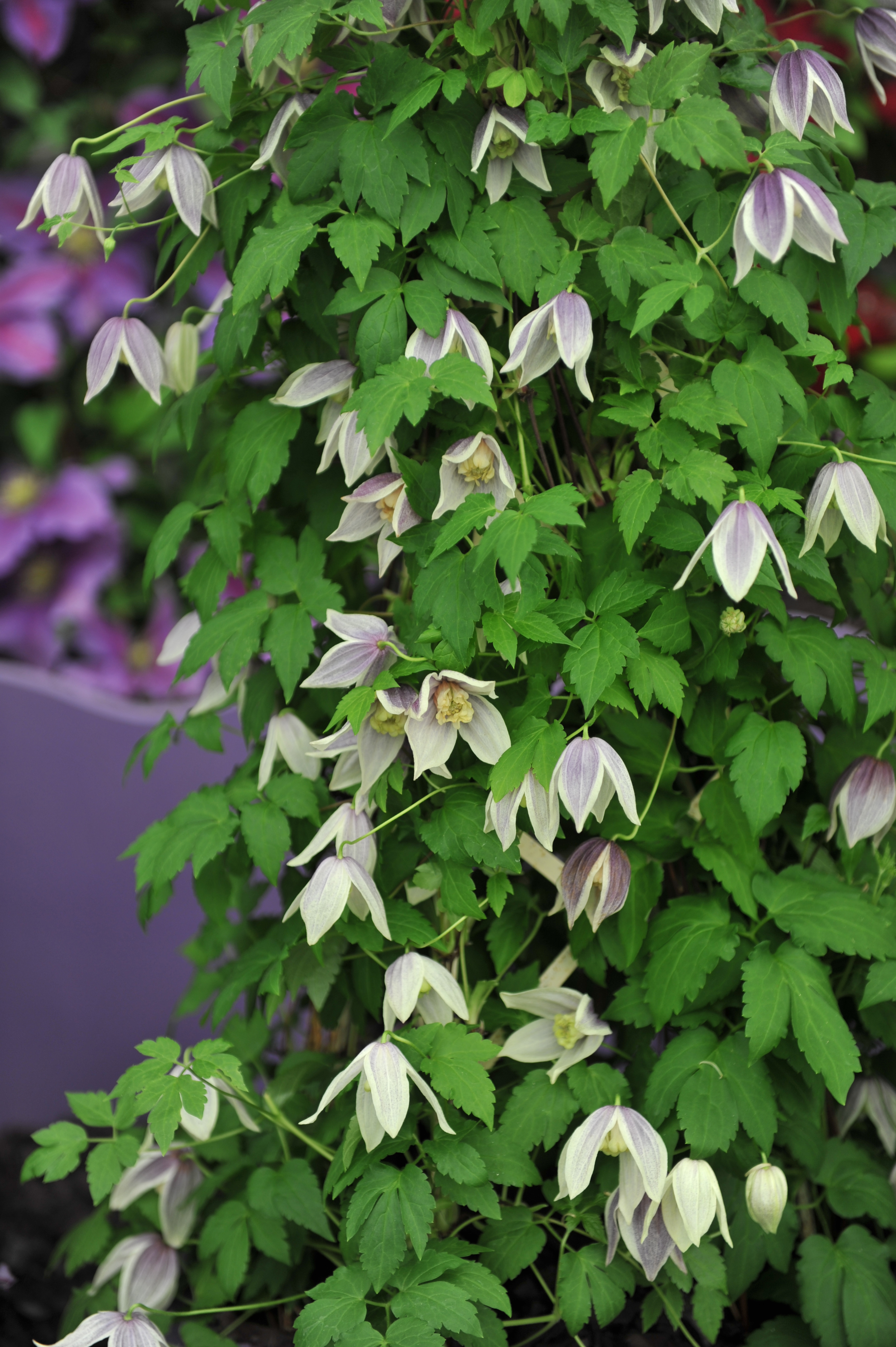Clematis koreana
(Clematis koreana)

Description
Clematis koreana is a Clematis species of the Atragene group ( Clematis sect. atragene ) native to the mountains and hills of northeast China (in eastern Jilin and Liaoning provinces), North and South Korea, and easternSiberia (in Primorsky Krai ) occurs at an altitude of 300-2000 m. It grows there in the undergrowth of mixed forests with oak, maple and spruce, often together with rhododendrons. The scientific name was validly published for the first time in 1901 by the Russian botanist Vladimir Leontjevich Komarov. C. koreana is a small-flowered, deciduous climber with smooth stems. The plant climbs up to 5 m high and has palmately compound, 3-lobed leaves. The leaves are oval (elliptical), pointed to slightly acuminate and have a few coarse saw teeth along the edge. Sometimes the terminal leaf is three-lobed and the side leaf is two-lobed. The leaves are 50-90 mm long and 30-85 mm wide. The plant has nodding, bell-shaped flowers. The flowers are single on up to 12 cm long purple-violet stems, which grow from the leaf axils of an old stem or a new shoot. The flower has 4 narrow oval, tapered sepals (sepals) that are 3.5-5 cm long and 0.7-1.2 cm wide. The sepals have 3-5 longitudinal leaf ridges (thickened leaf veins ) on the outside and curve outwards in a pagoda-like manner at the apex. They are violet blue to reddish violet in color and sometimes greenish towards the tip. The flower has pointed, spatulate-shaped staminodiawhich are slightly hairy and pale yellow, cream or whitish in color. They are about a third of the length of the sepals. The plant flowers from late May to early August. The fruits are 4-5 mm long and have a hairy plume ( beak ) up to 4.5 cm long.
Taxonomic tree:







